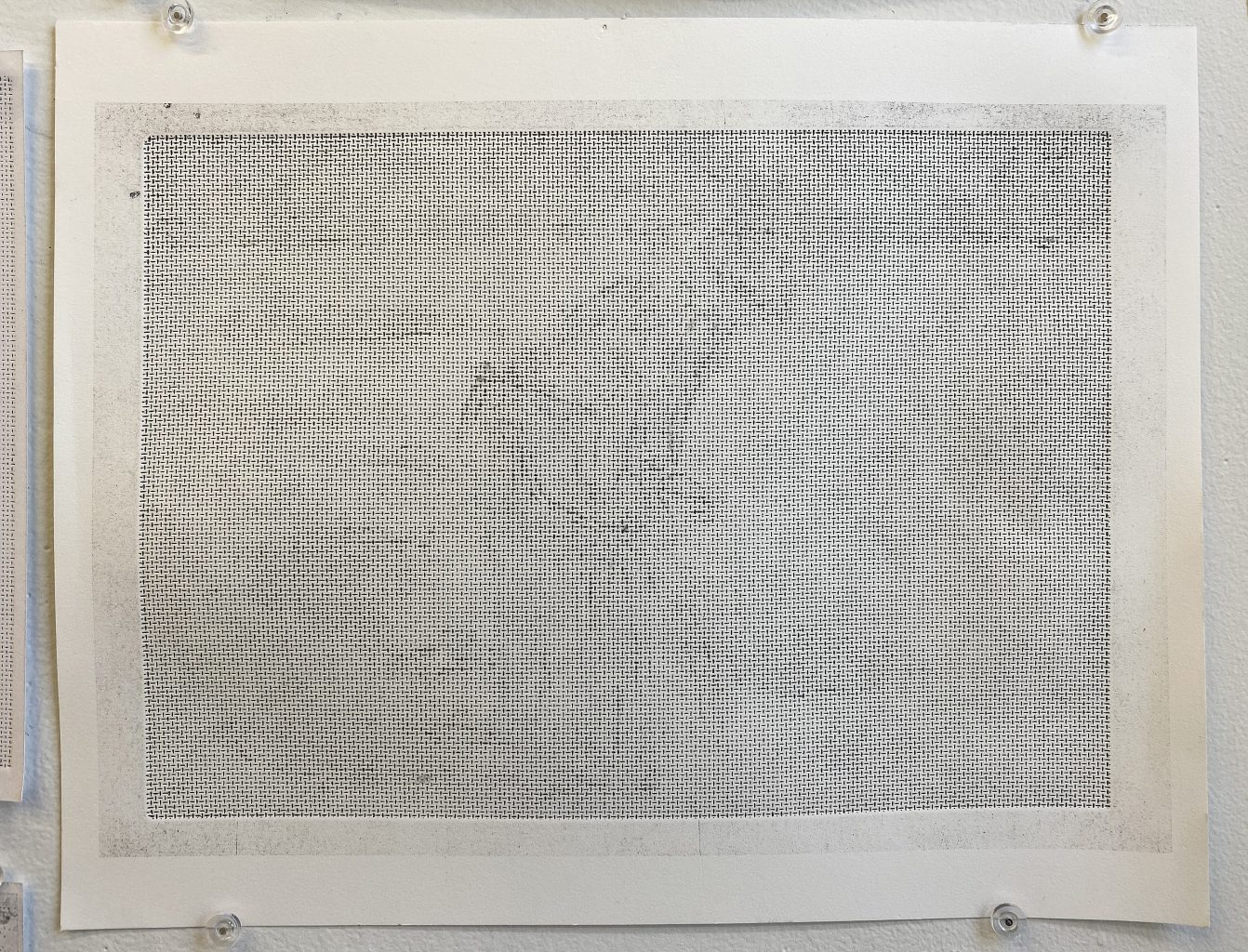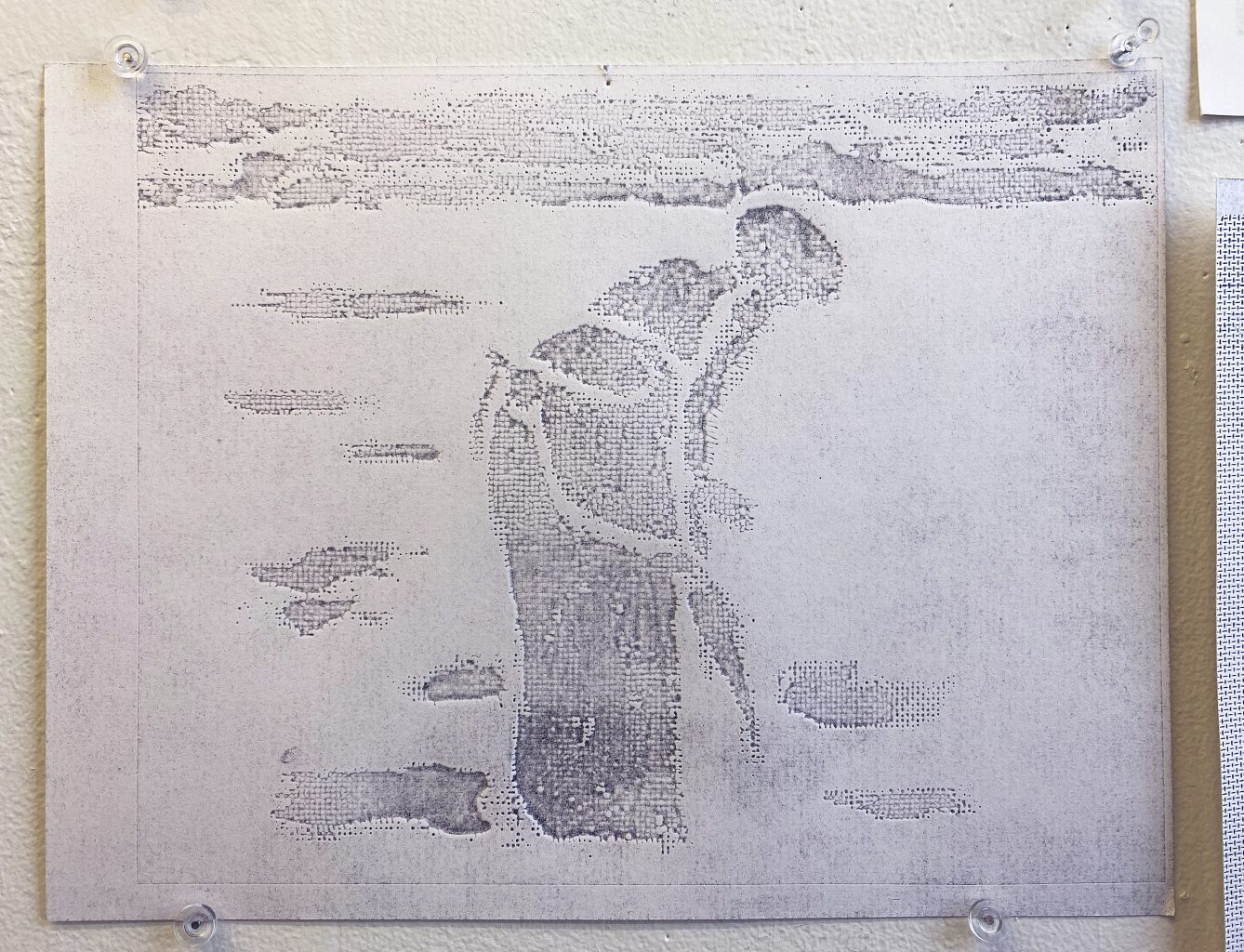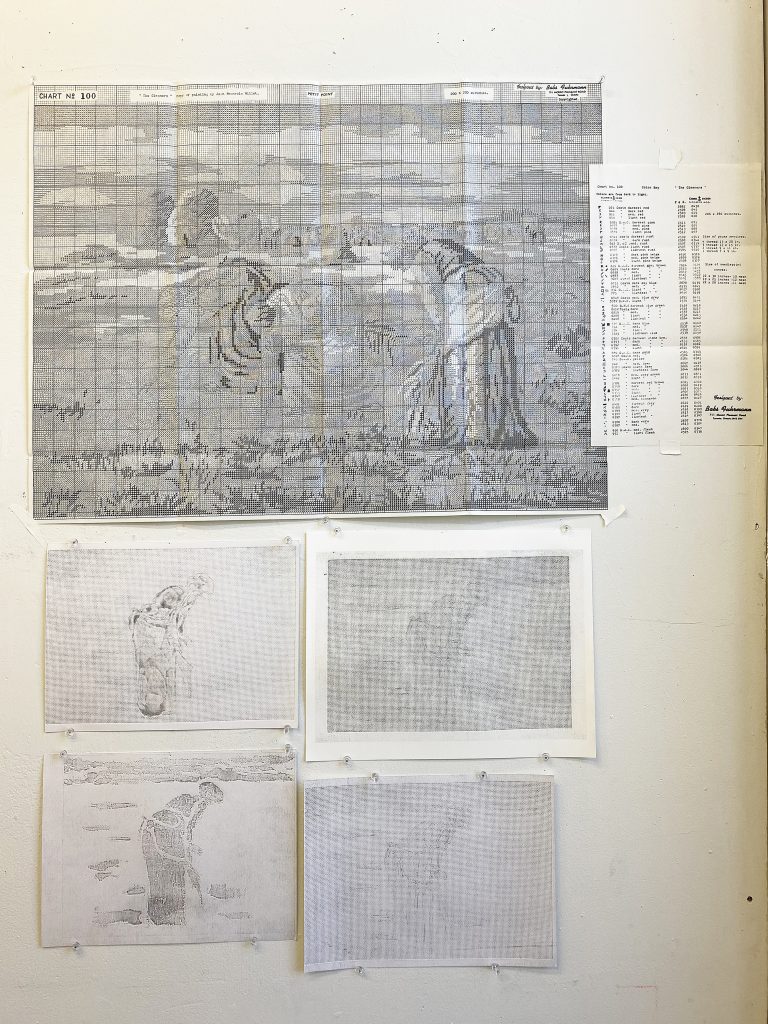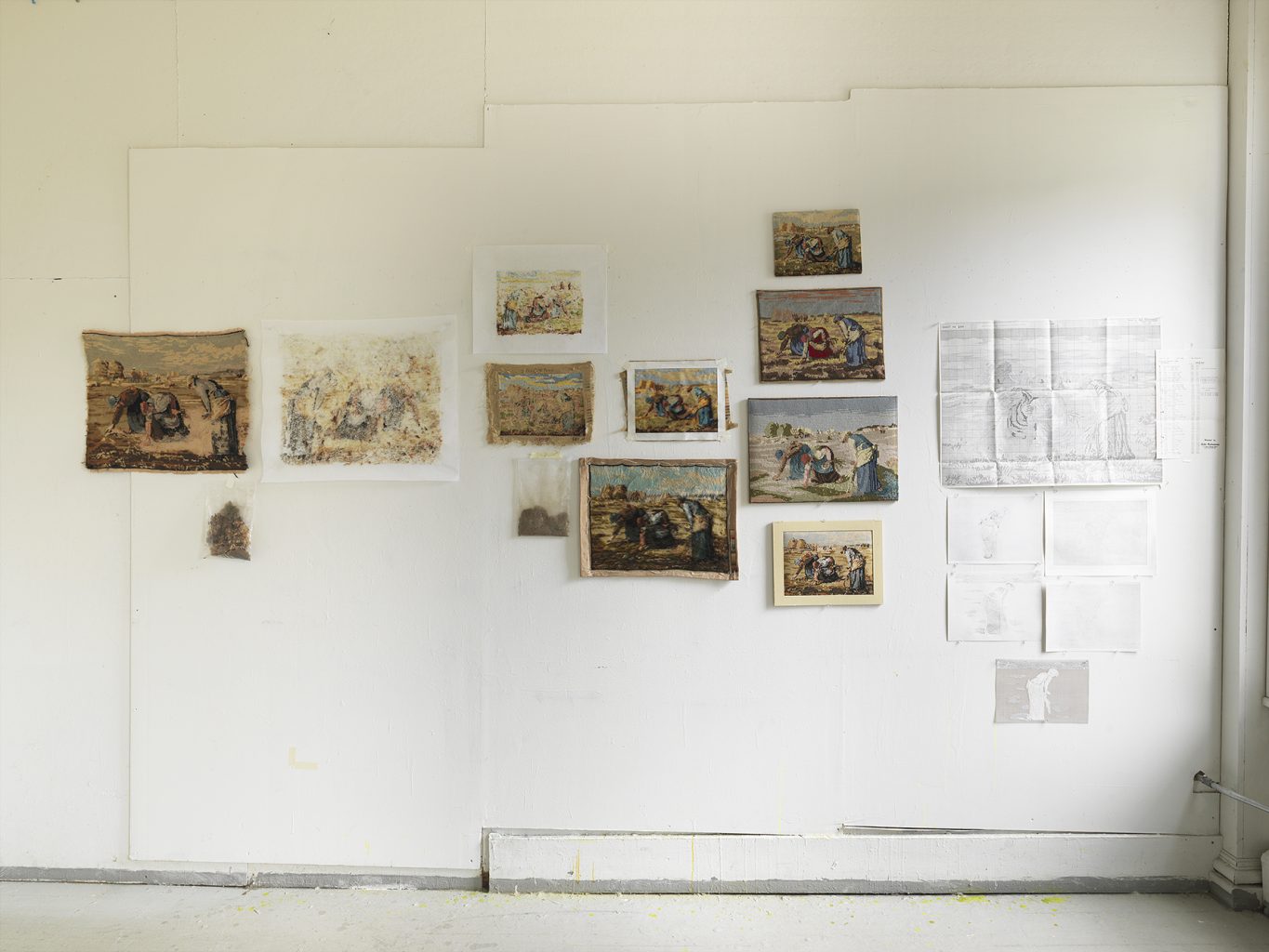Driftpoints: The Gleaners (2024)
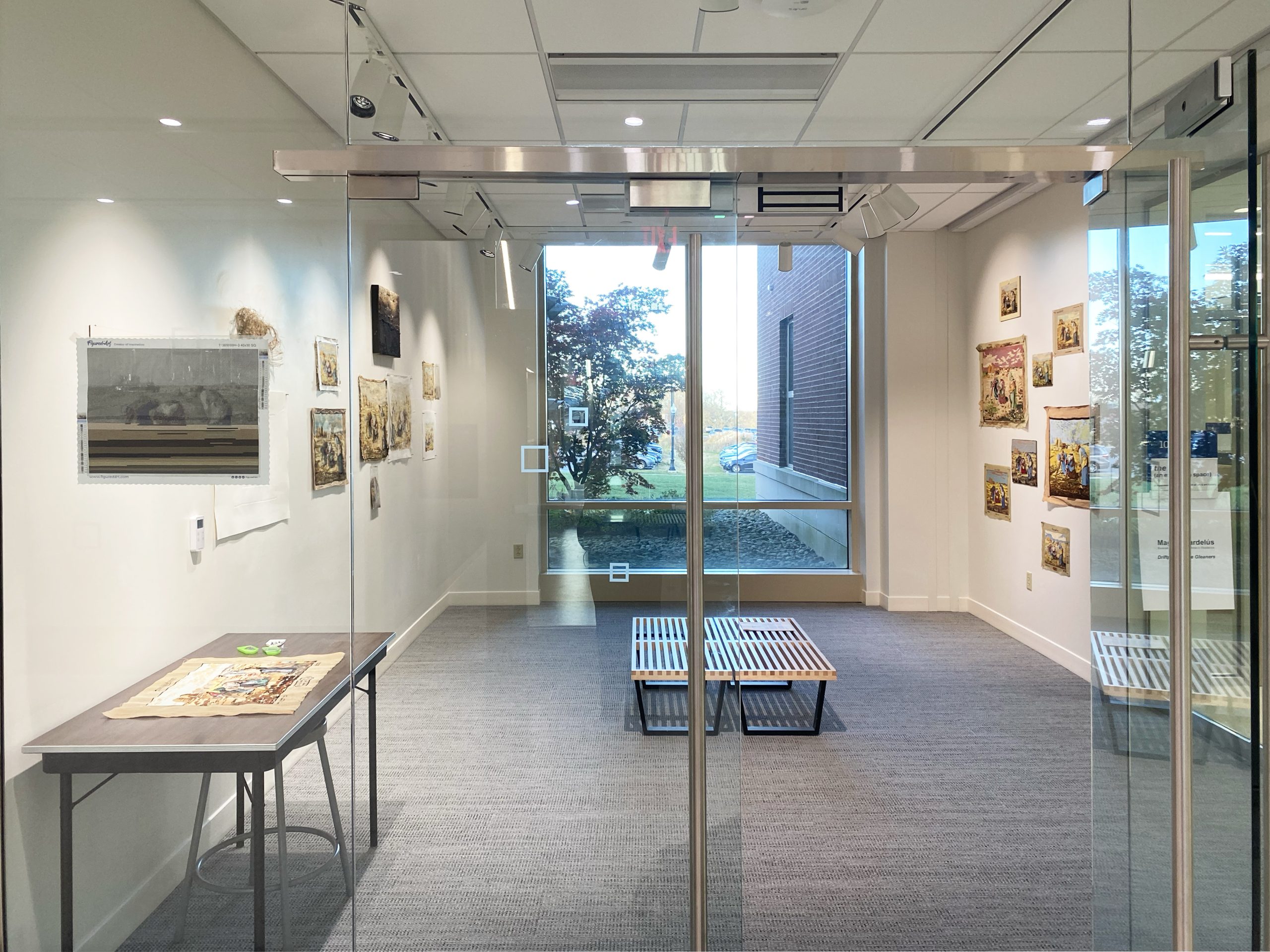
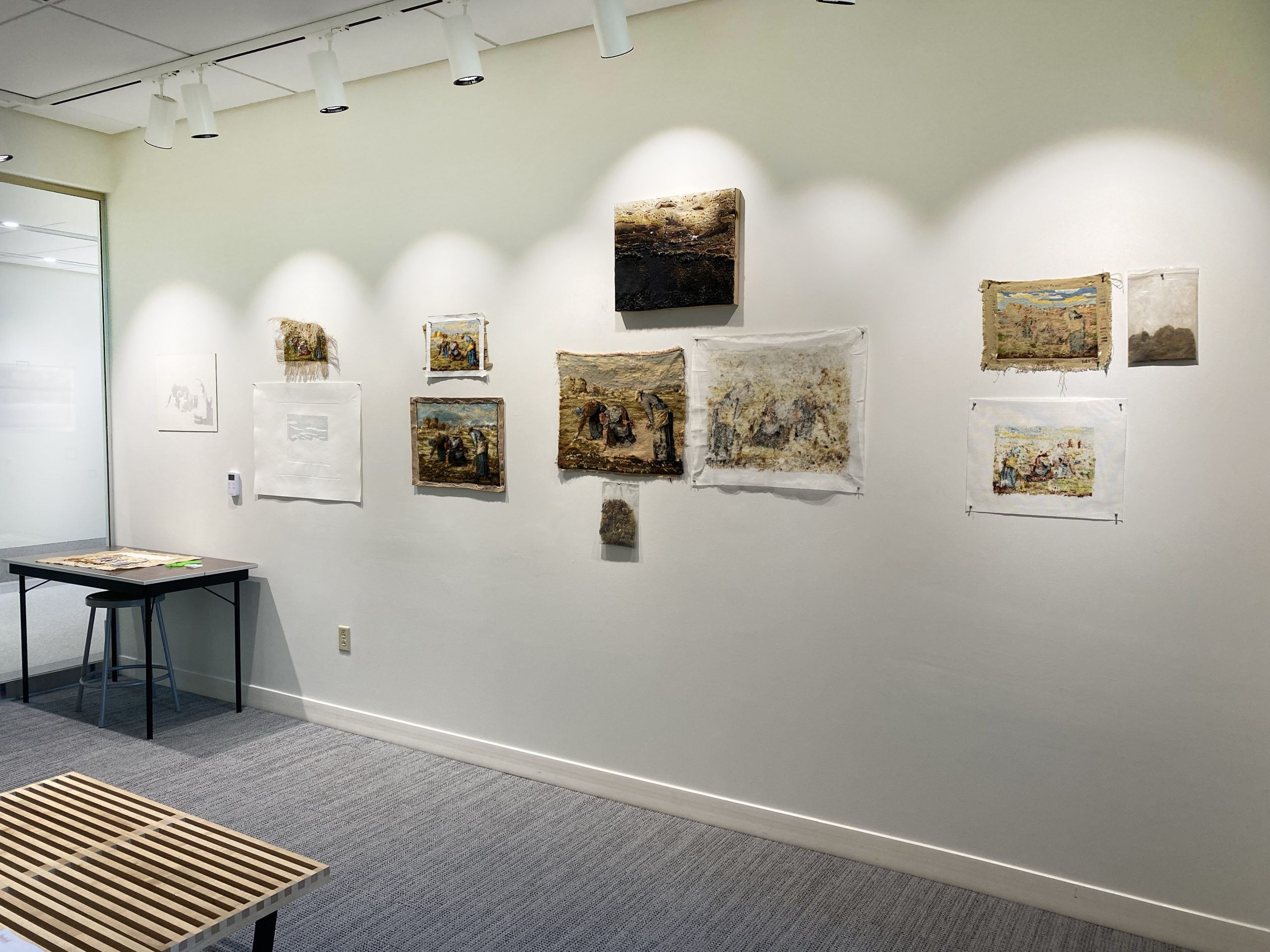
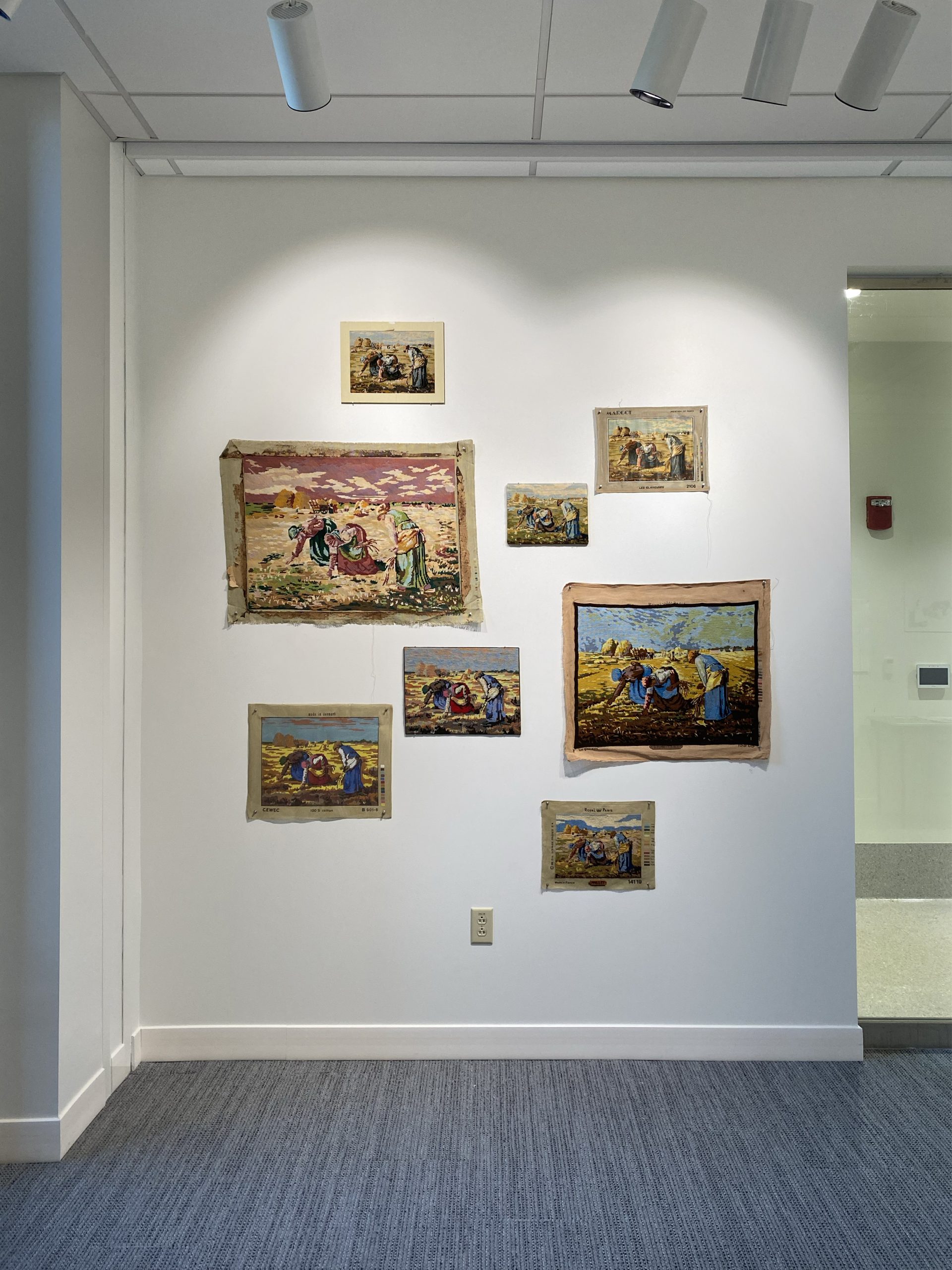
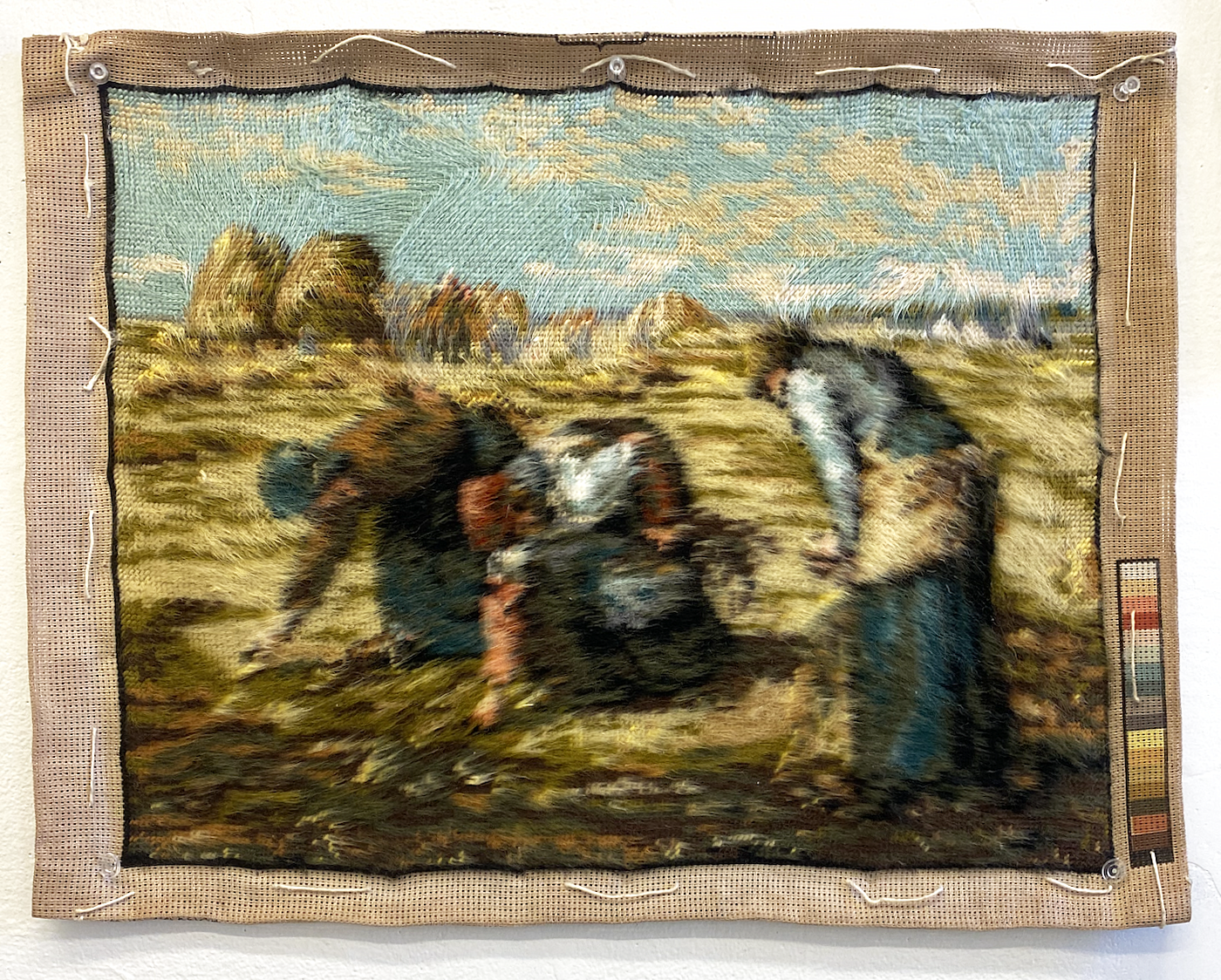
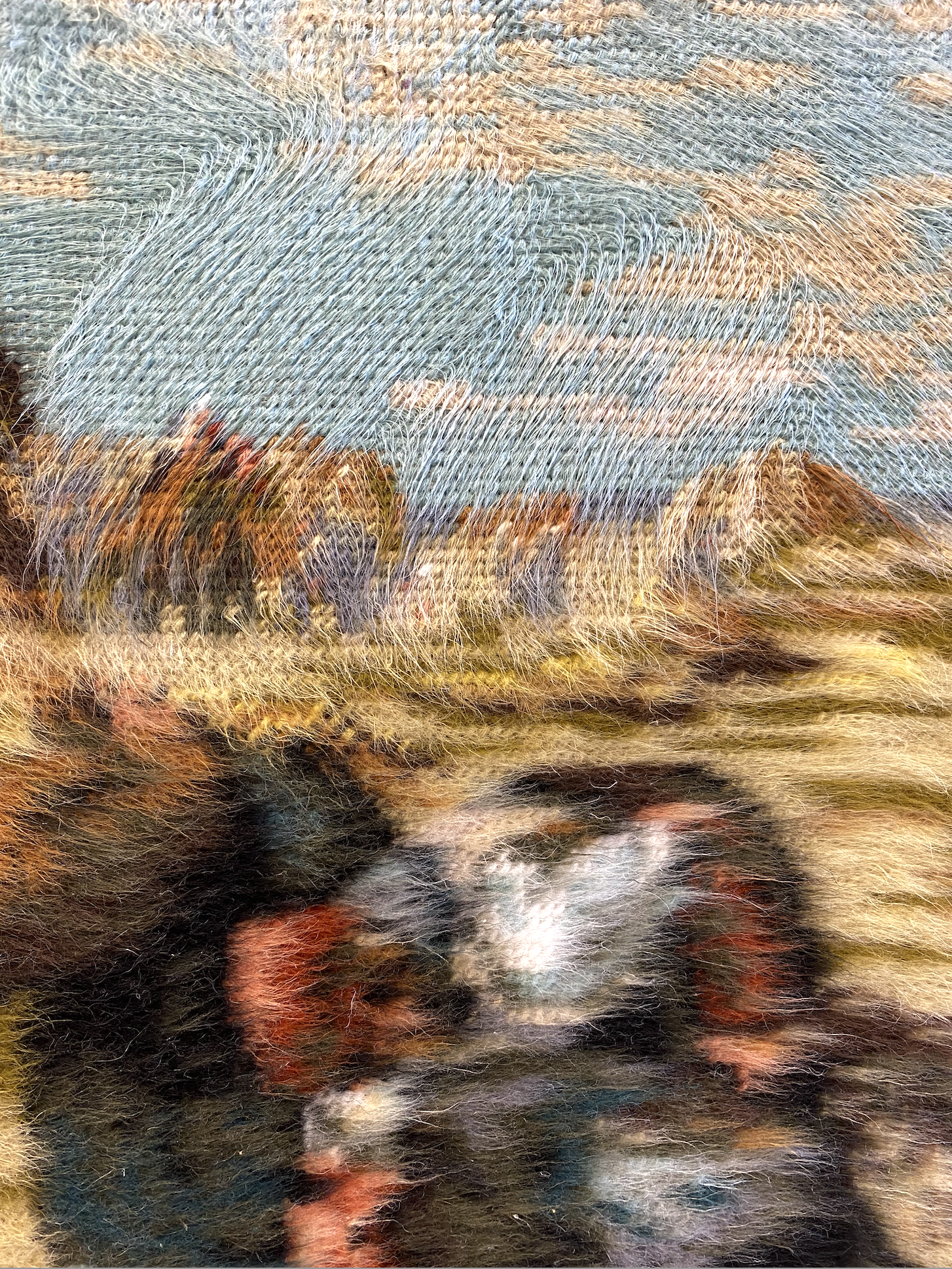
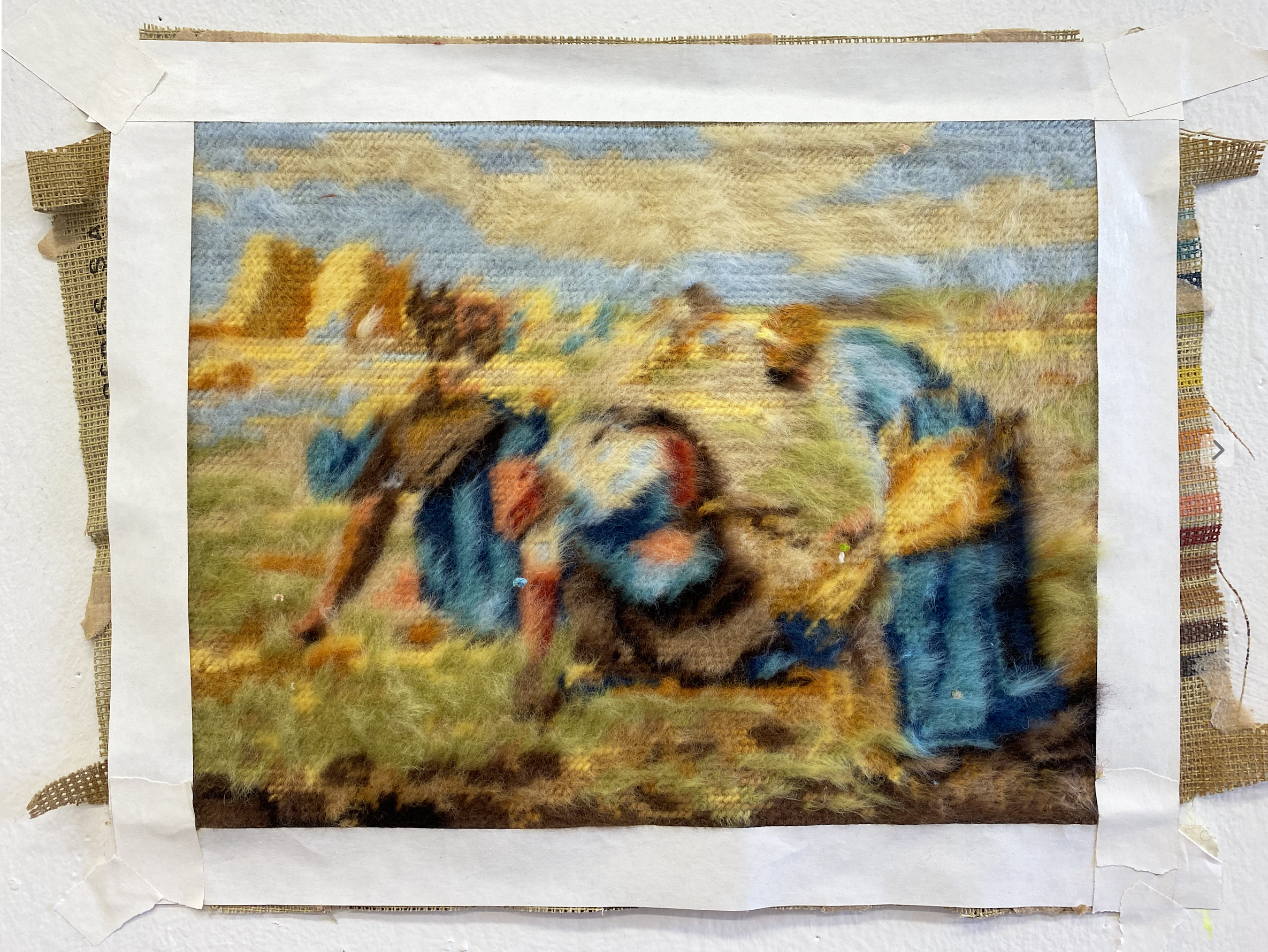
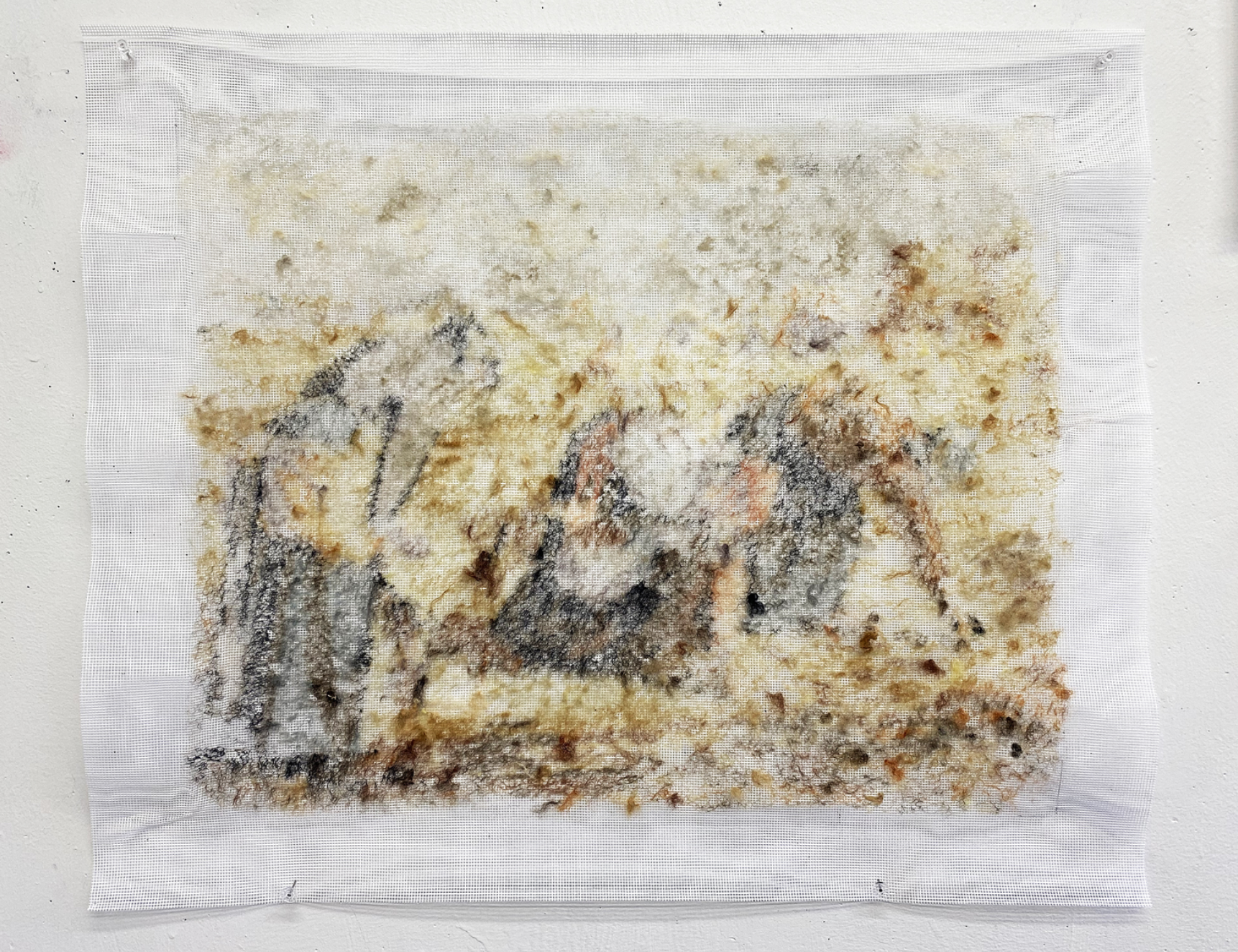
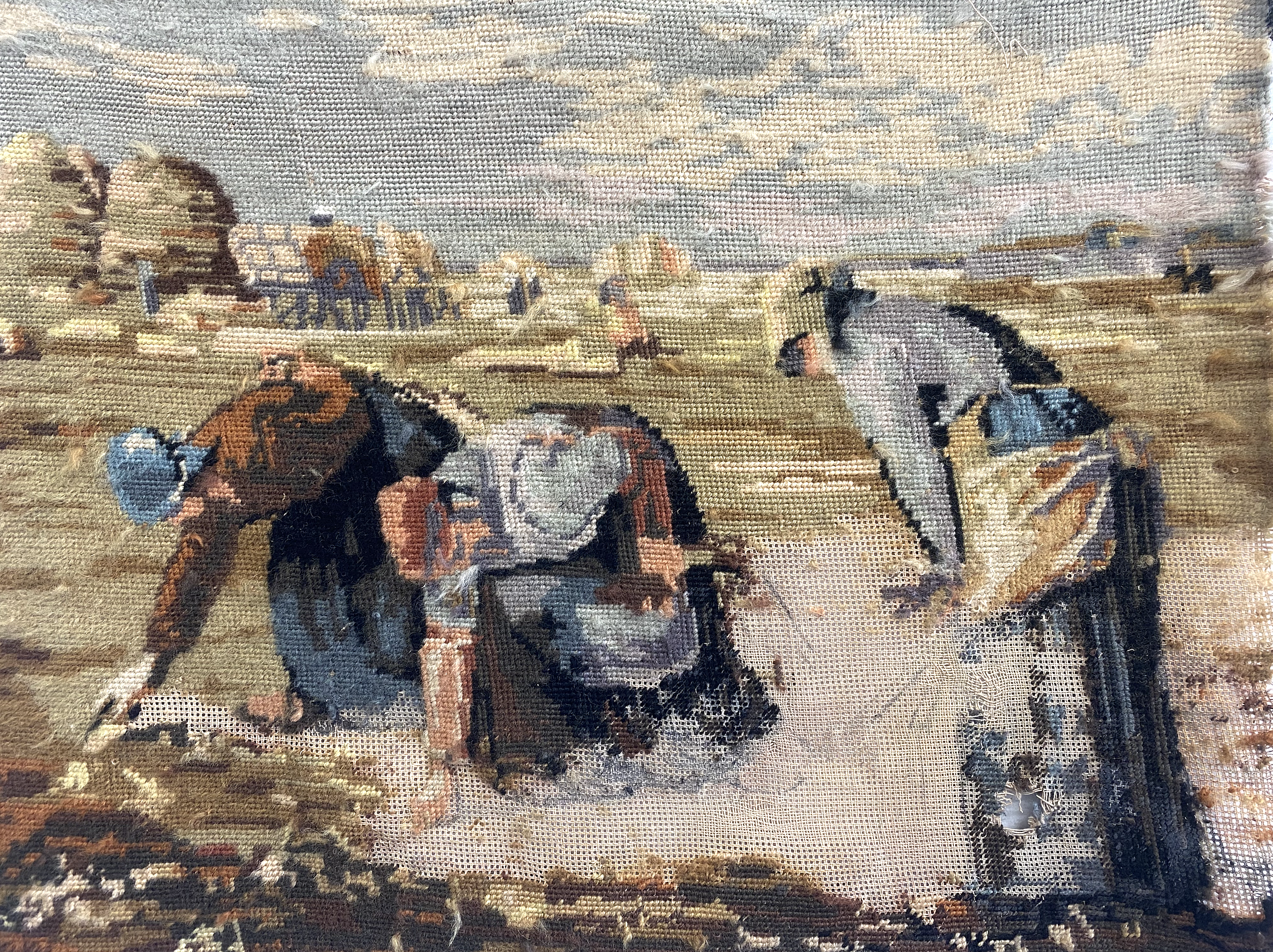
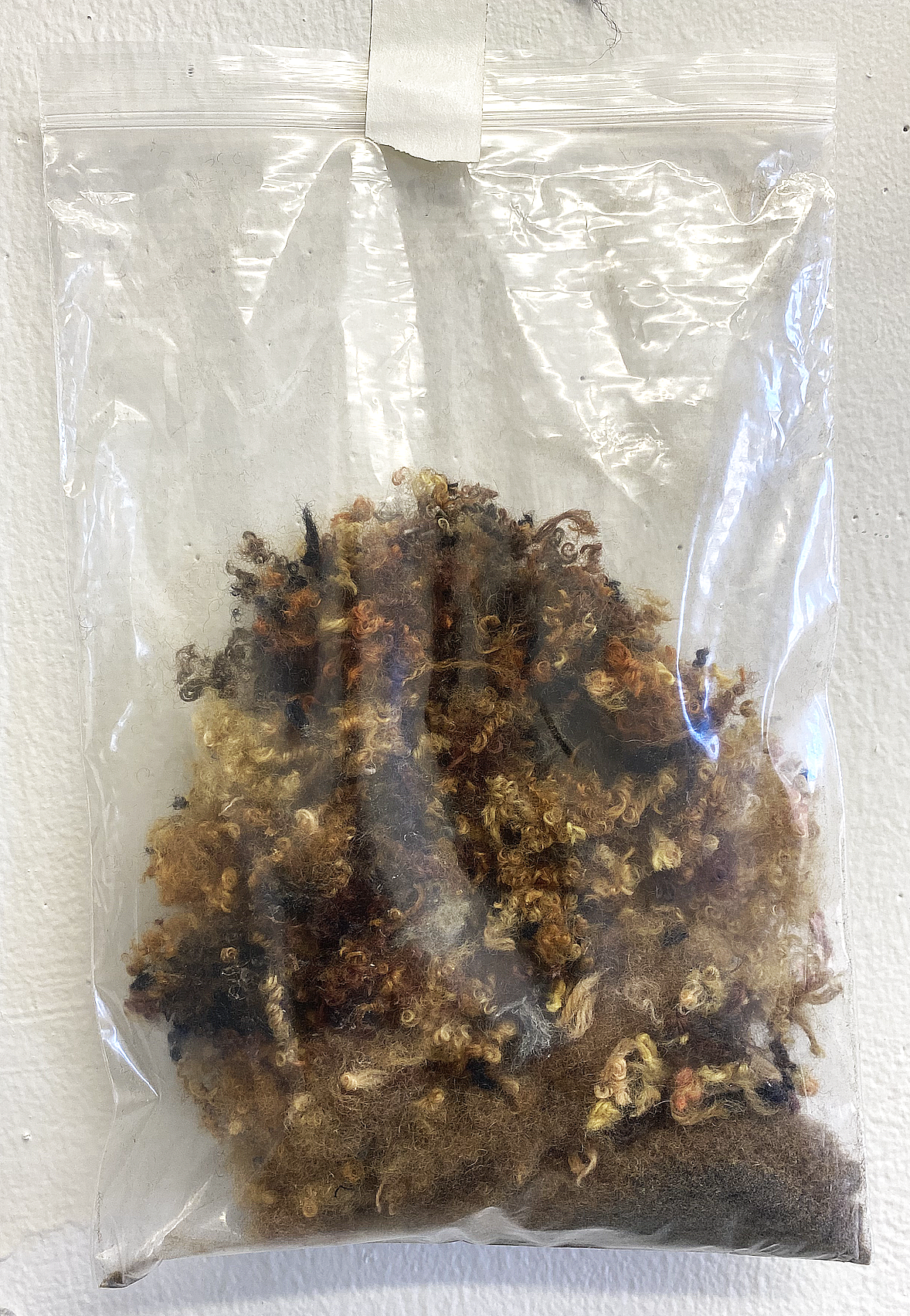
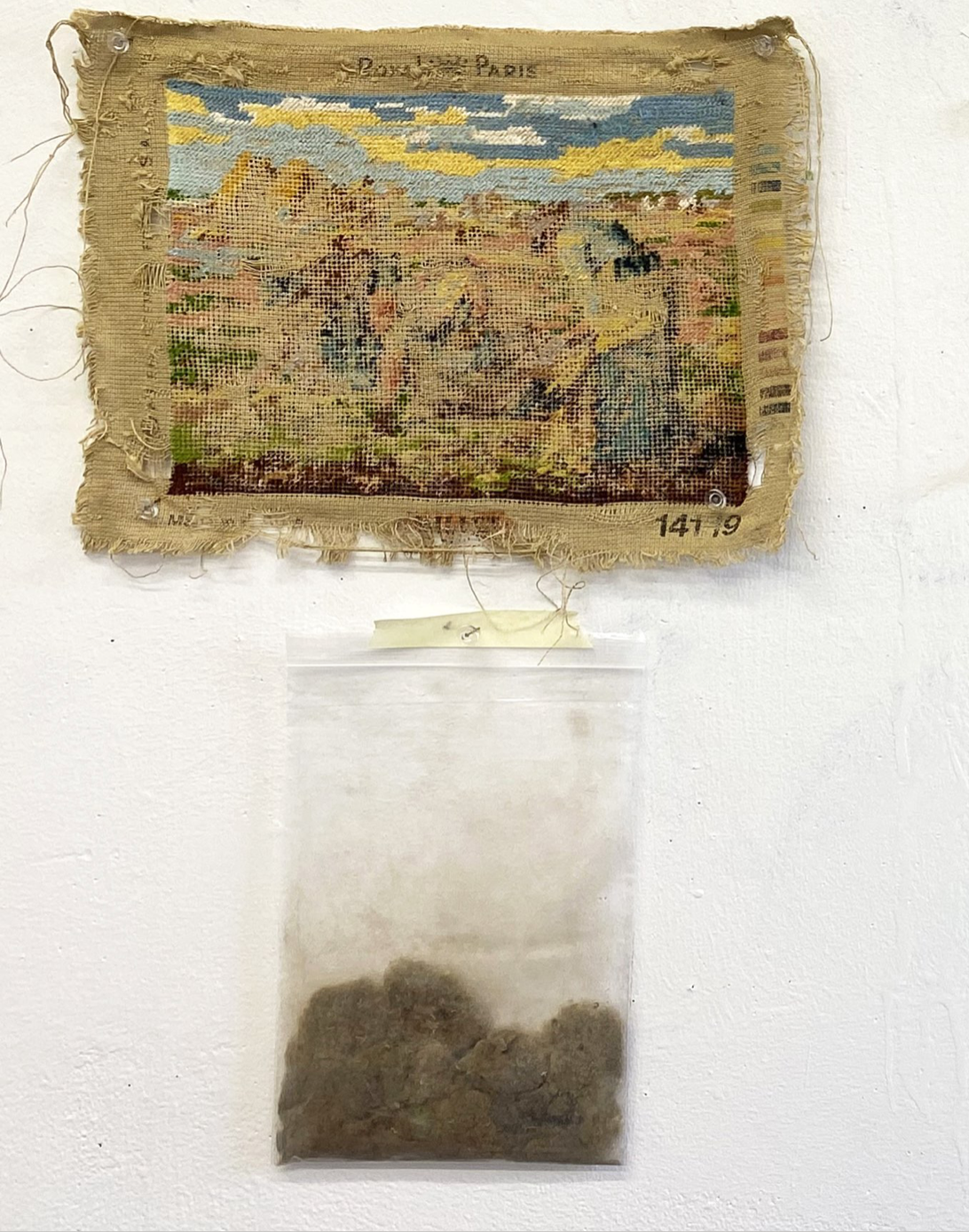
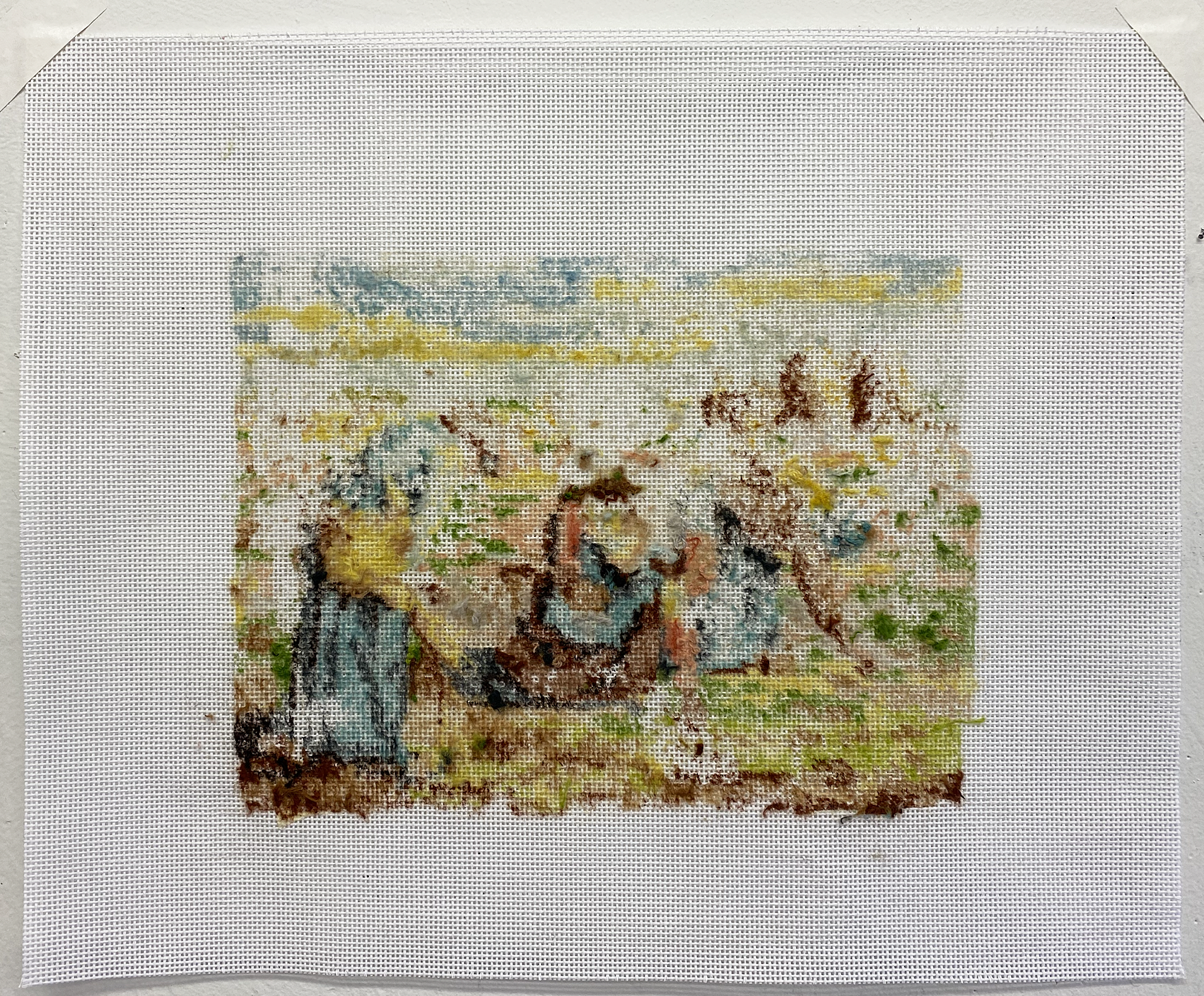
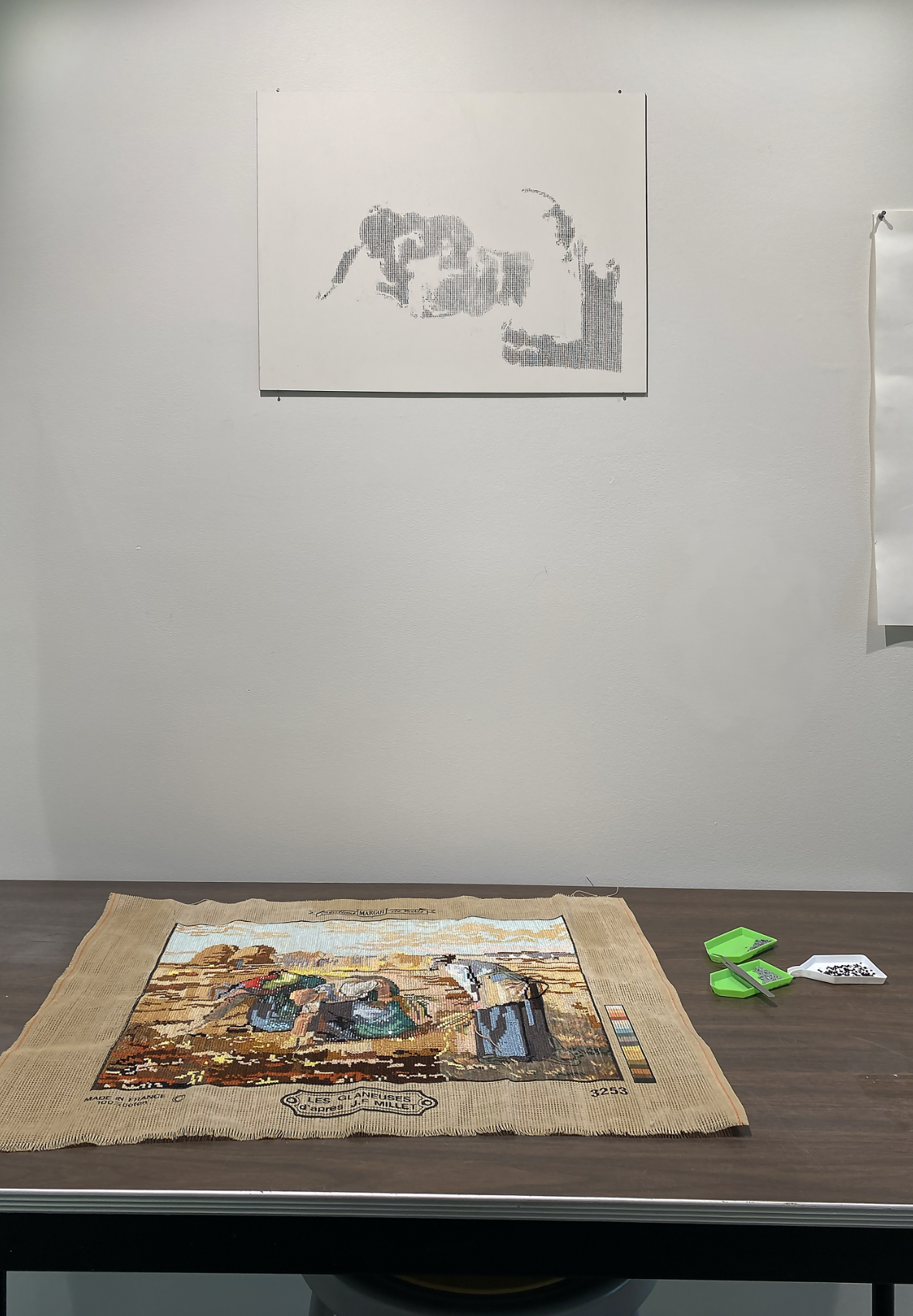
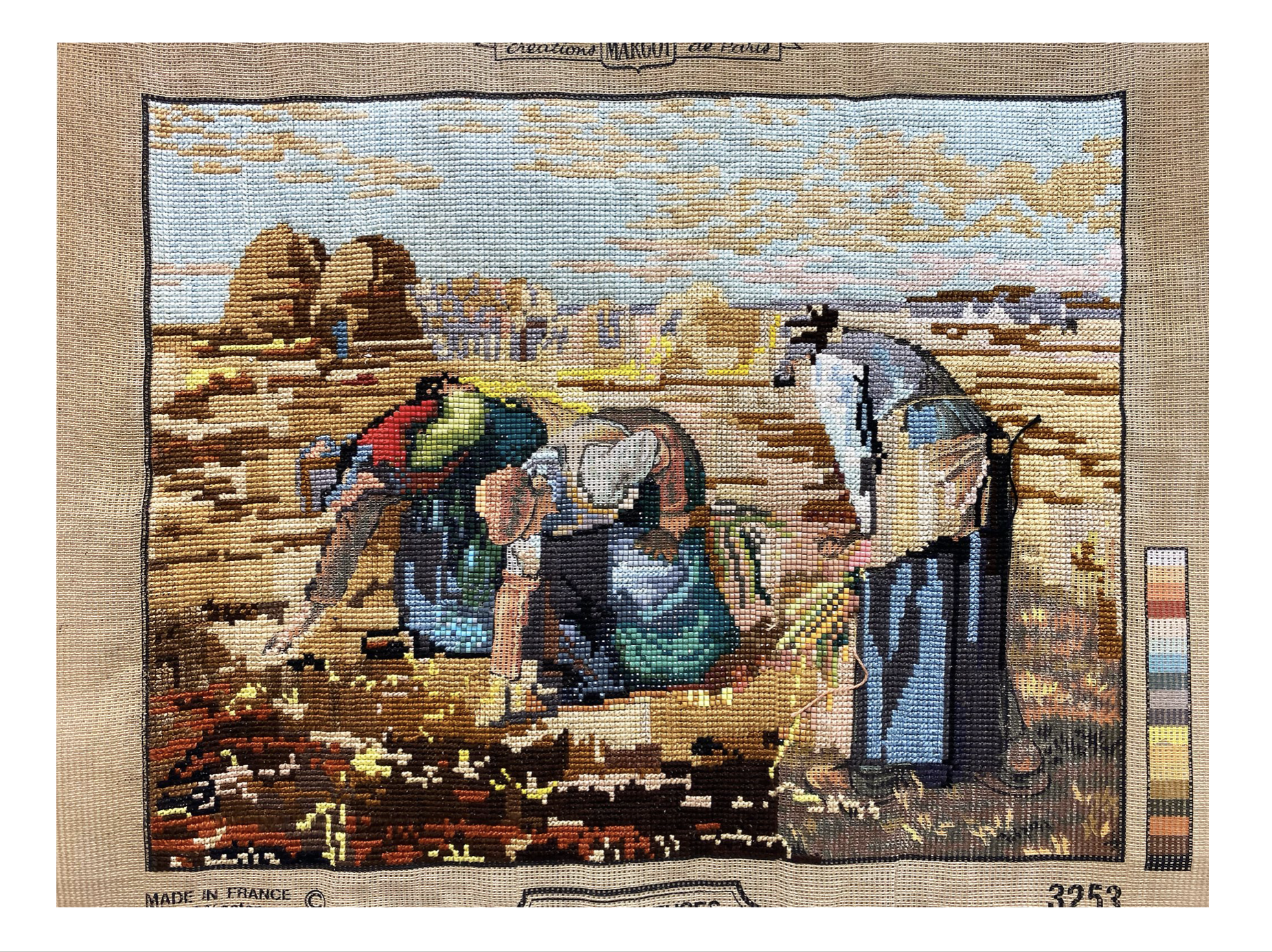
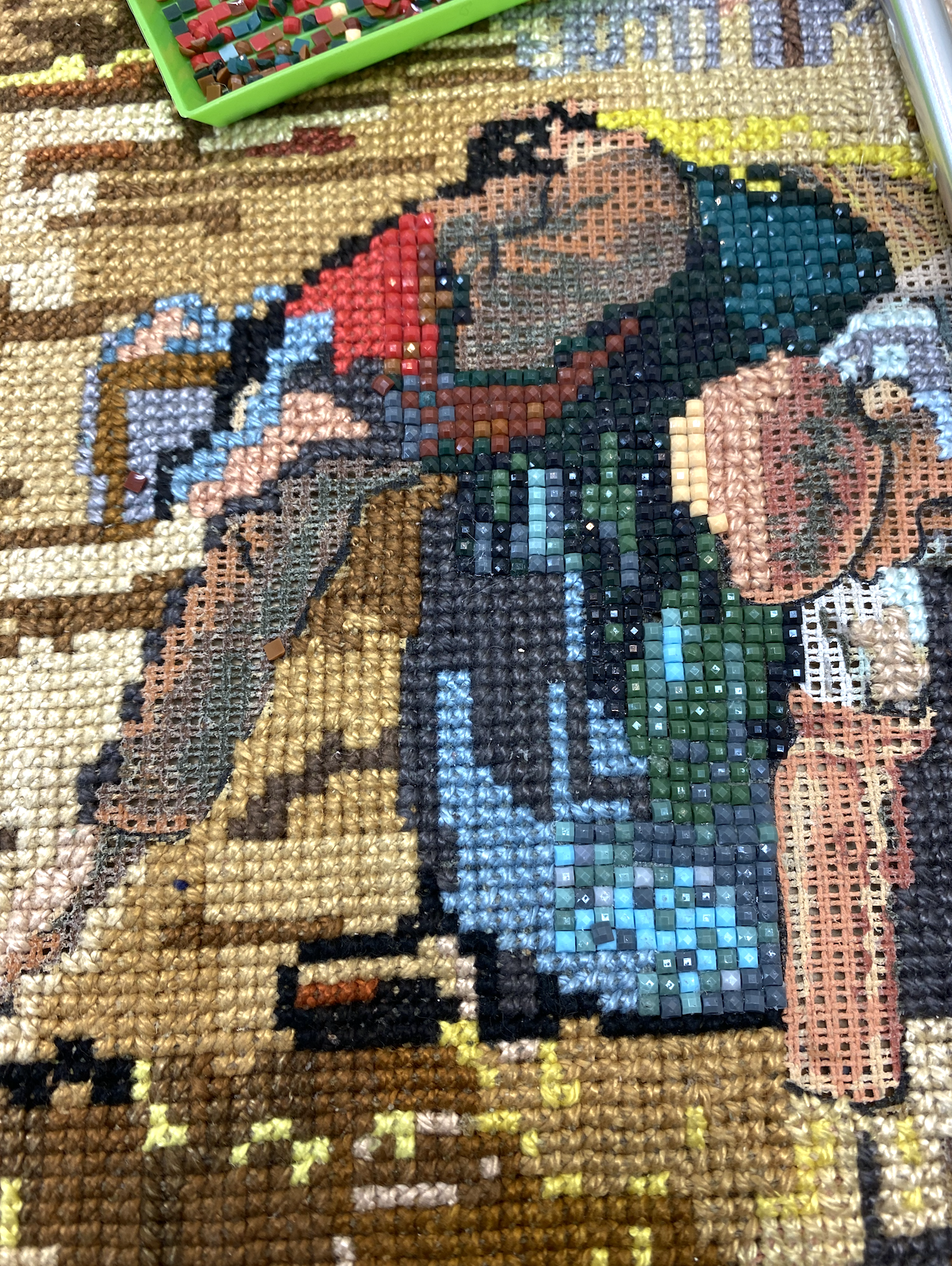
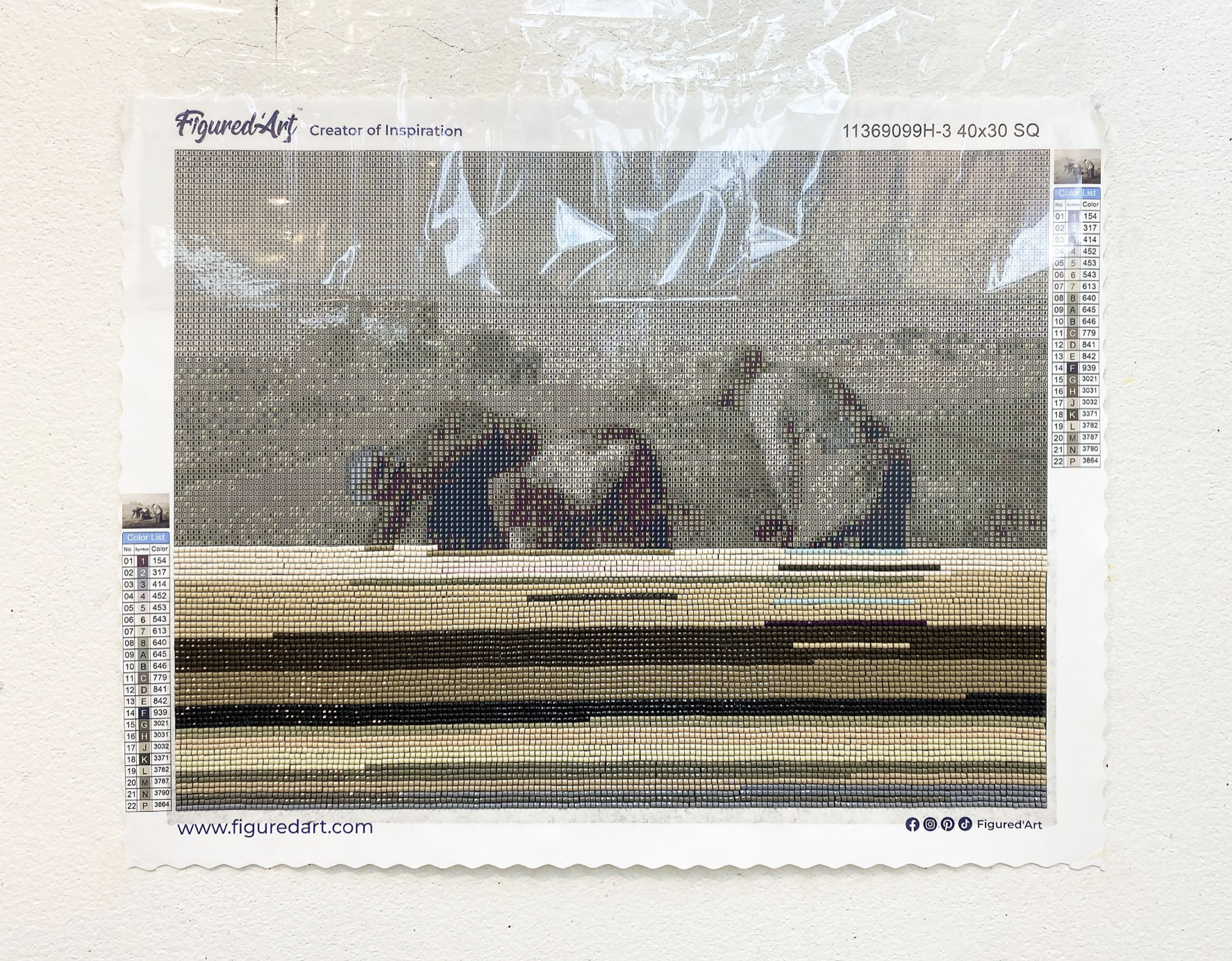
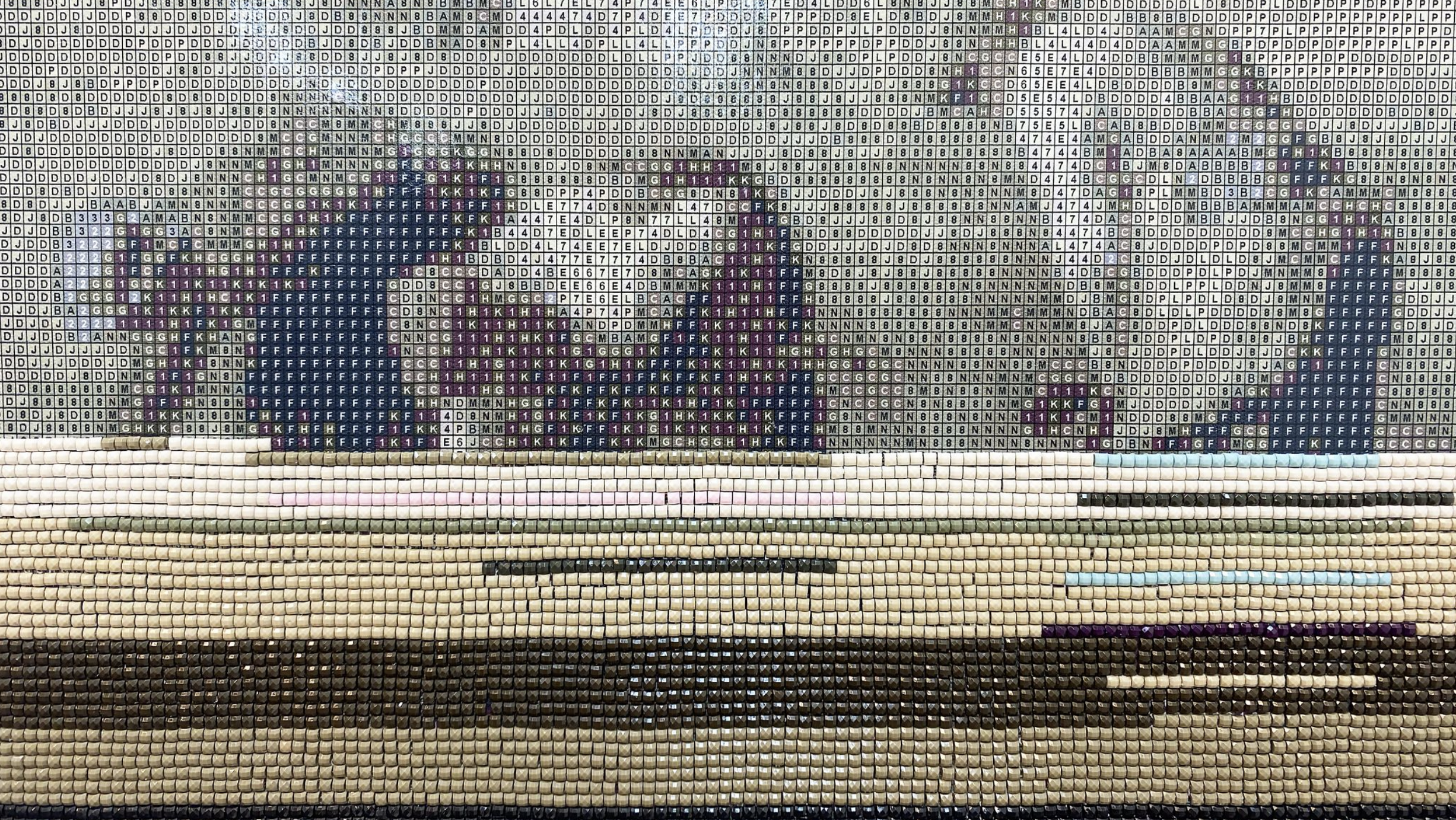
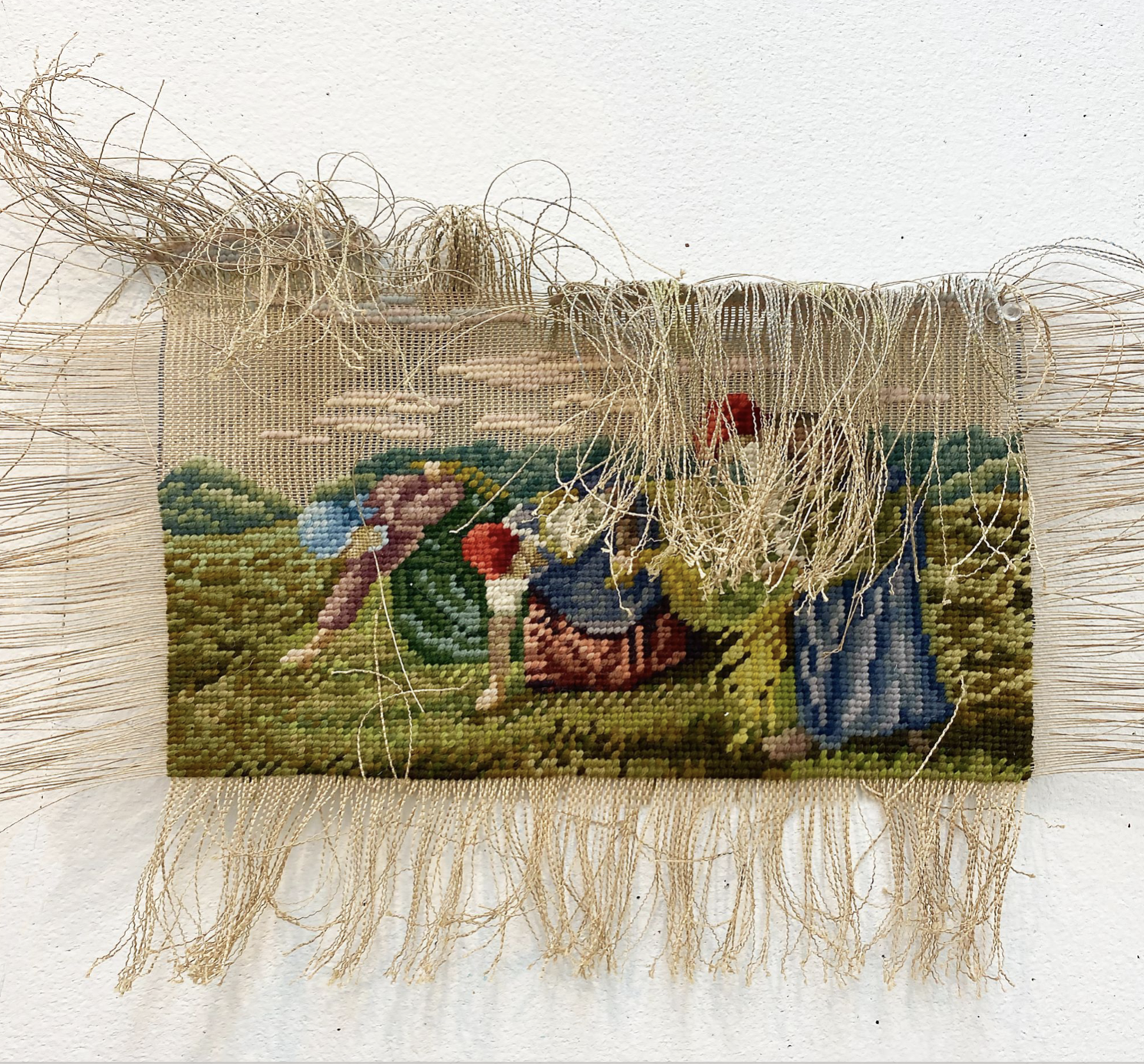
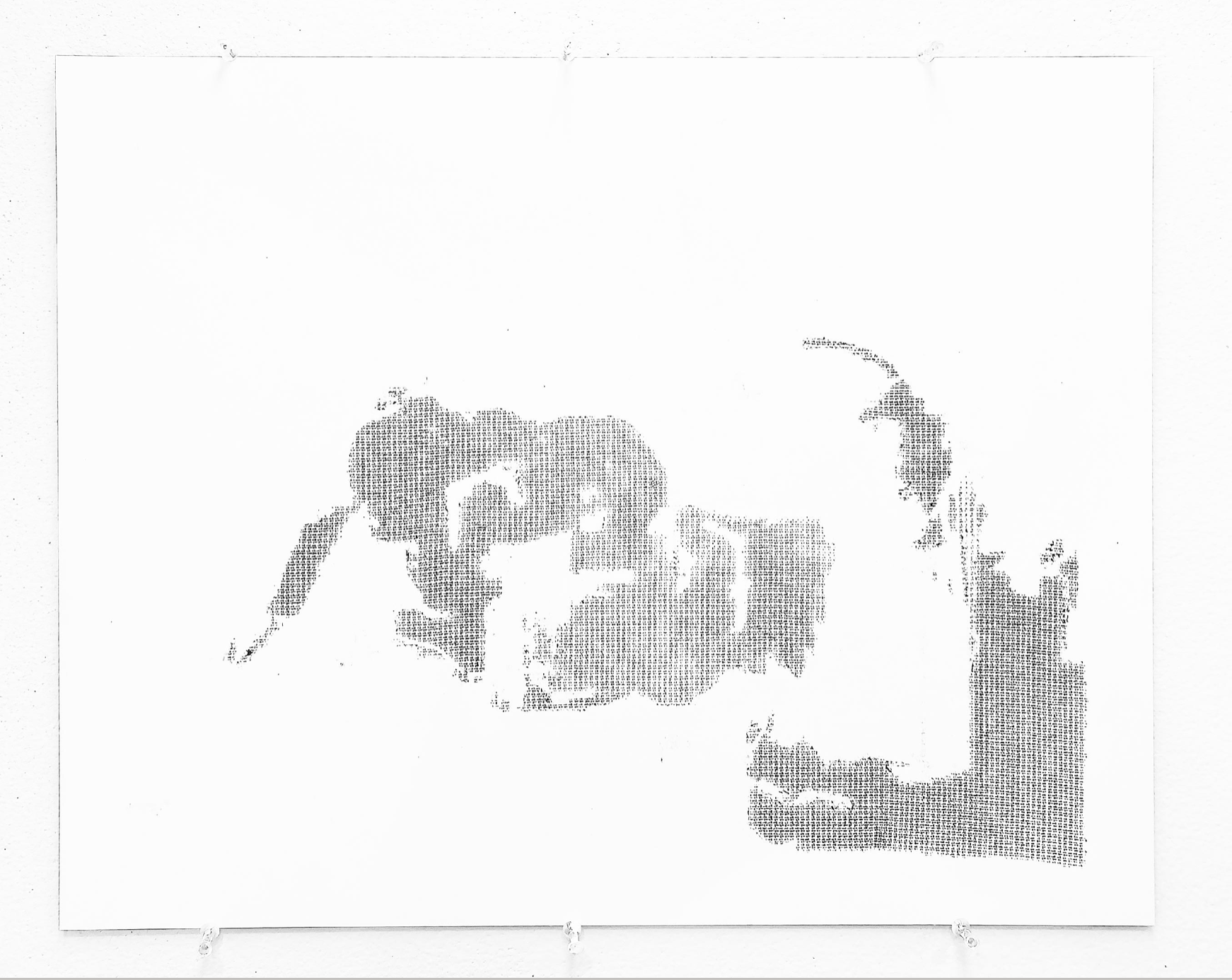
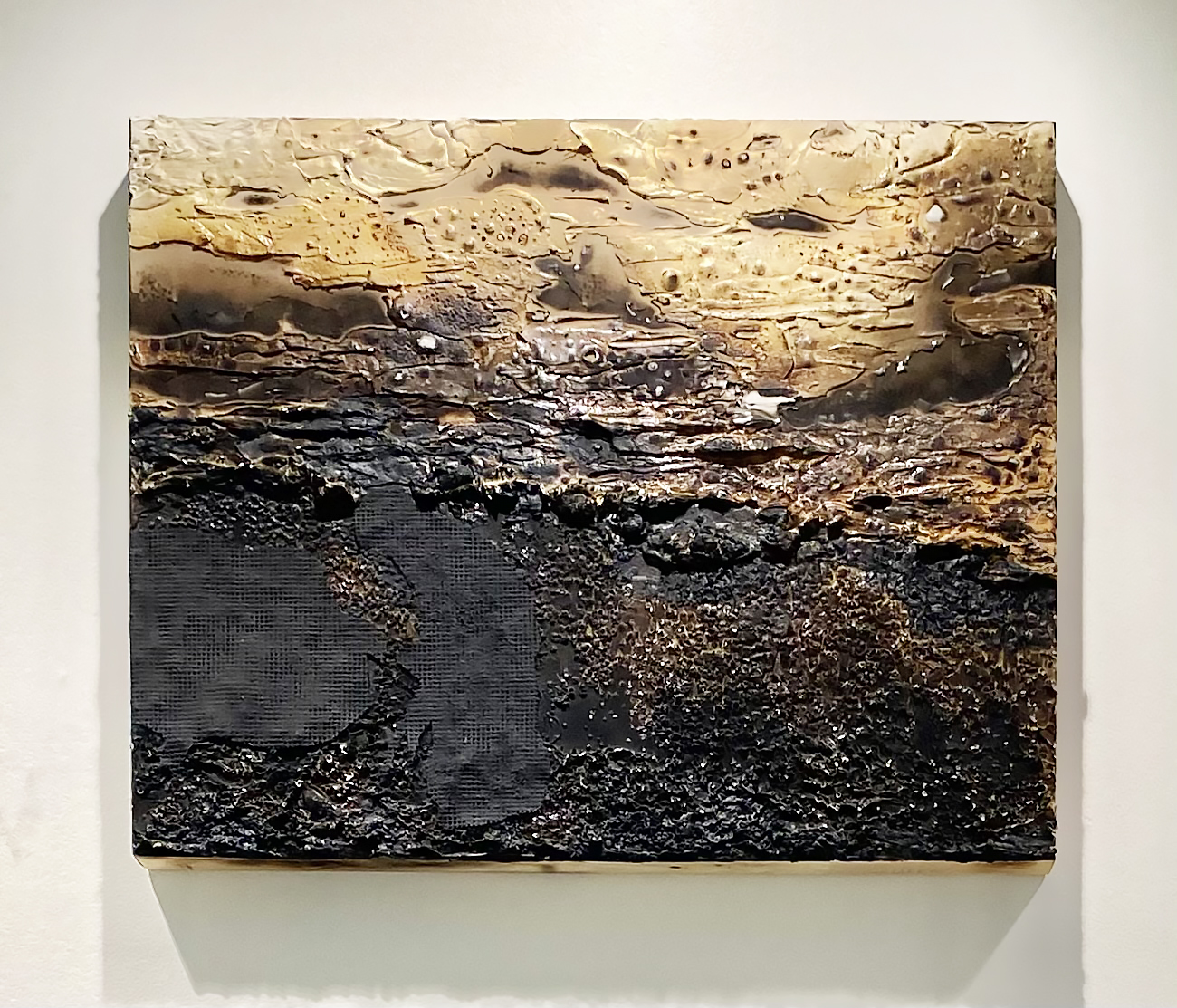
10 / 19
Gallery 103, Bucknell University, 2024
Maggie Cardelús, the 2024 Ekard Artist in Residence at Bucknell University, is a dual national of the US and Spain, currently based in Paris, France. Her interdisciplinary work intricately weaves together visual culture theory, materiality, and evolving historical perspectives through hybrid approaches to traditional media. In her ongoing project, Driftpoints, she critically reinterprets the iconic 1867 painting The Gleaners by Jean-François Millet, engaging with both personal experiences and broader cultural themes.
This widely reproduced image has inspired a diverse array of needlepoint kits for over 100 years, each varying in size, color palette, stitch type, mesh count, and artistic interpretation. Cardelús investigates this transformed image to uncover the cultural dynamics inherent in needlepoint—a medium often overlooked yet rich in socio-historical significance. Needlepoints are polysemous, complex artifacts that embody, among other things, a pixelated, semi-automated approach to crafting, meditative practice, and the often anonymous labor of women. They raise profound questions about the status of the image and its ongoing transformation over time.
In her artistic process, Cardelús employs a tactile, hands-on approach to explore found needlepoint. As you can see in the work featured in this show, she experiments with techniques such as pulverizing needlepoint surfaces into dust, reshaping wool into painterly forms, unweaving or printing incomplete vintage needlepoints, and transferring brushed surfaces onto new canvases. In one piece, she treats stitches as scattered grains—akin to the wheat berries depicted in The Gleaners—and plucks them from the surface, gathering them in a pouch. For another piece (still in progress on the table), she integrates plastic “stitches” into unfinished areas of her work. Additionally, she reimagines the landscape as barren and burned, with the gleaners represented as black silhouettes almost pushed out of the image. These experiments complicate dualities such as presence and absence, finished and unfinished, front and back, constraint and freedom, as well as old and new.
Through her work, Cardelús collaborates both with the form and the makers—now mostly deceased—in order to transform needlepoint into both subject and catalyst for rethinking art's relationship to process and materiality. She shifts this medium from a decorative craft to a critical space for exploring intricate histories and personal experiences. Additionally, her practice signifies a shift from viewing art as a static product to appreciating it as an evolving process. By experimenting with a variety of materials—both traditional and found—she challenges fixed identities and narratives in art, suggesting a more fluid approach to both identity and objecthood.
